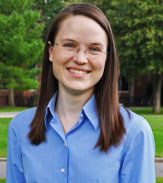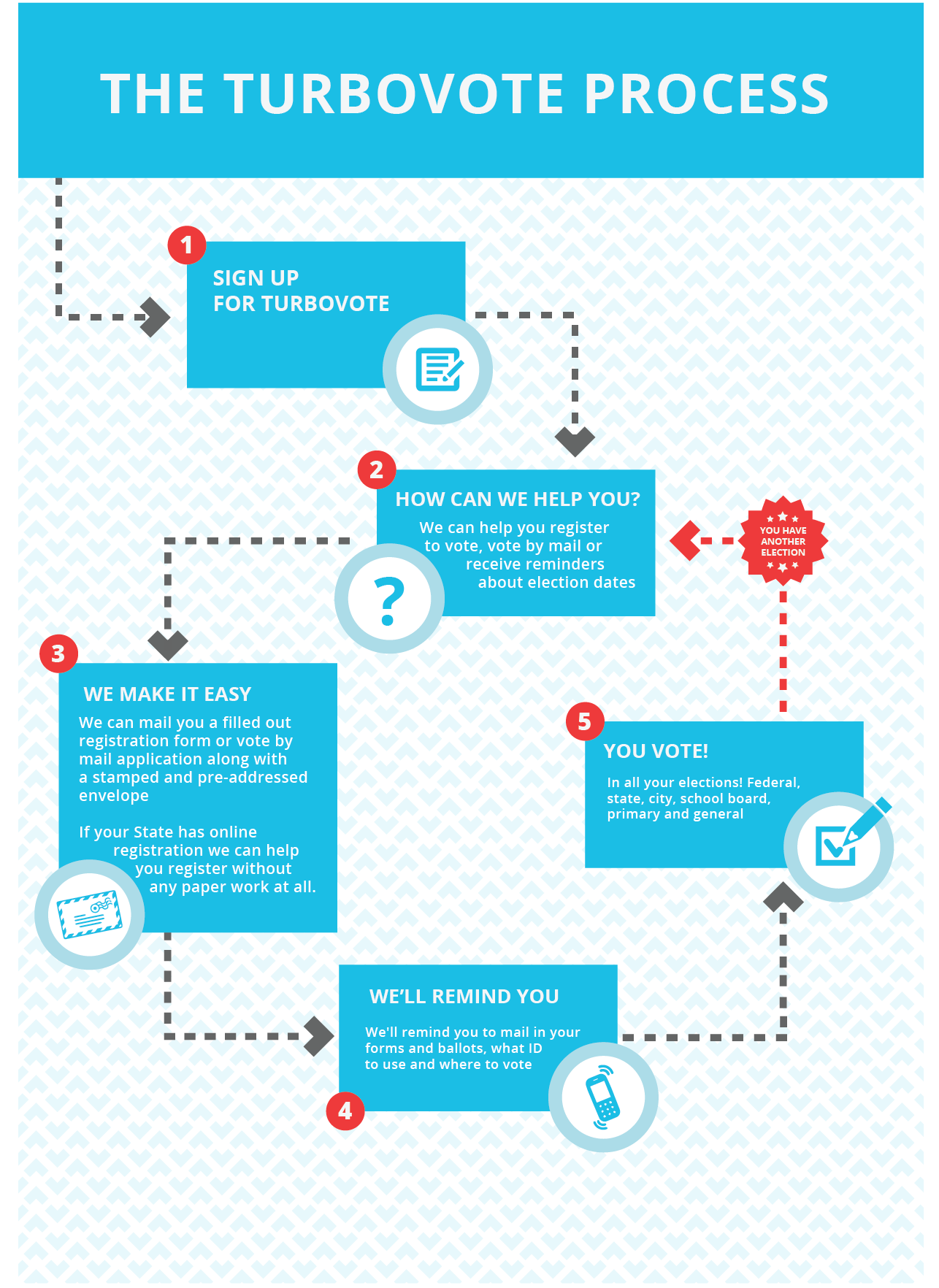In good company – Surveying the Landscape of Elections Technology Projects
Interview with TurboVote Co-Founder Kathryn Peters

In this series of interviews, OpenElections has conversations with the leadership of other initiatives that are improving data transparency, easing the voting process and applying new technologies to elections.
For our first piece we talk to Kathryn Peters, co-founder of TurboVote, our sister Knight News Challenge: Data project. TurboVote is a service that aims to make it as easy to vote, and keep track of all the elections you can participate in, as it is to do all the other things we now do online.
***
OE: How did the TurboVote project and Democracy Works Inc. come about, and what were your motivations for starting them?
KP: Seth [Flaxman, TurboVote co-founder] spent a summer in college registering voters in Philadelphia with a sandwich board and a stack of paper forms, and recognized that there had to be a better way to reach would-be voters than standing on street corners. When he finished his first semester of grad school and realized he’d missed a local election back home, that same realization struck him again - voting should fit the way we live. We live online, on our phones, with services and applications that help organize our lives and simplify daily tasks.
Seth asked my advice in building an election-reminder service. My first response was incredulity. I’m from Columbia, MO, where the county clerk Wendy Noren builds her own voter engagement tools and has sent email reminders about upcoming elections for a decade already. I just assumed that these were normal voter services. Once Seth convinced me that Wendy’s online voter services were rare, it made perfect sense to try and make them available to every voter. So we started prototyping.
OE: What background(s) do you bring to this work?
KP: Seth and I met in a graduate policy program, so we’re both deeply committed to innovating with and for government–in this case, local election administrators–which sets us apart from most of the tech startups we know. Seth’s previous work had been as a researcher (at the Council on Foreign Relations), and he approached graduate school with a big research question: why does the Internet seem to be passing government by? I had worked in both political organizing and information management, but was studying international affairs and thinking about how we promote and support democratic processes abroad. Those two concerns came together in a really fantastic way, even if it means I’m in Brooklyn instead of, say, Cairo right now.
OE: Can you describe how TurboVote impacts an individual voter?
KP: It depends a lot on the voter, where they are and what they need. But let’s imagine a college freshman, who arrives on campus and is offered the opportunity to register to vote during orientation, and decides to register at her parents’ home in another state. As she signs up, we’ll also get her on-campus address, and ask if she’ll need to vote by mail in elections back home. So after she joins TurboVote, we’ll send her a voter registration form filled out with her information with an addressed, stamped envelope so she can return it to her election administrator. And then as an election comes up, we’ll send her an email reminder and mail her an absentee ballot request form, again with a stamped envelope so all she has to do is sign it and send it in. And then we’ll send her reminders about the deadline to submit those forms so she gets everything in the mail on time. And election after election, she’ll hear from us and have whatever forms and information she needs to take part, even in local elections she might not hear about living on a college campus the next state over, for example.
We designed a simplified flow chart to try and simplify all the many ways we serve different voters.
OE: TurboVote is one of three projects currently in your roster. How has your work expanded and further defined itself this year?
KP: TurboVote’s growth in 2012 demonstrated how much demand there is for voting information and services, but the only way to do this sustainably is if government eventually adopts it and takes on these new tools for voter outreach. To that end, we spent 2013 researching local election administrations across the country, spending six weeks shadowing offices across six states and learning about their work, their staff, the tech they’re using, their needs and motivations. We found dedicated innovators making incremental improvements at every election in pursuit of better elections for their voters. And we found dozens of ideas worth building or popularizing that could help them run elections better, more simply.
From that research, we started building Ballot Scout, which makes it easy to add Intelligent Mail barcodes to absentee ballot envelopes and trace them through the postal system. Right now, most election officials send out their absentee ballots, get some of them back, and have no way of knowing if the others went undelivered, or weren’t cast, or are delayed in a postal processing facility and will arrive three days after the election. Barcode tracking gives officials better insight into what happens to those ballots as they leave the election office, and the ability to intervene if anything goes wrong. We’re working with seven counties from Oregon to Florida to test Ballot Scout this fall (and we’re still looking for three more counties to join the beta).
And last summer, the Pew Charitable Trusts asked us if we’d consider taking on data and technology support for the Voting Information Project. It’s the biggest election dataset in the country, providing tens of millions of Americans with polling place information each cycle, and we were eager to help build out its permanent infrastructure for data collection and processing. It’s also connected us to state election officials and let us get to know their work and needs, as well as those of the counties we’d been working with previously.
OE: What is your business model, and how does it inform your effectiveness?
KP: We’re a 501(c)(3) nonprofit, currently funded through grants from the Knight Foundation, Democracy Fund, and Google, among many others. TurboVote operates on a partnership/fee model, where each of our partner organizations contributes a small amount toward our operating costs, and we’re developing a pricing model for Ballot Scout that will do the same for that service. As we continue to grow and add new partners, these revenues should bring us to fiscal sustainability by 2017, ensuring that we can continue our work without major donations.
OE: How does Democracy Works fit within the ecosystem of voting infrastructure projects going on now? Are there other best practices you are aware of?
KP: Great question. The ecosystem is somewhat ad hoc, but we’ve used research by Dana Chisnell and Whitney Quesenbery at Civic Design for information on what voters are looking for and how they interact with election data online, and we’re currently collaborating with ELECTricity on a project to offer free website templates to local election offices that takes the Civic Design best practices and implements them by default. We pool our election research with Long Distance Voter, whose forms we use in states that don’t otherwise provide a ballot request form, for example, and we compare deadlines, election administrator addresses, and other data where we can help check and support each others’ work.
We’re also participating in the third-annual National Voter Registration Day, which brings together civic organizations like the League of Women Voters, the Bus Federation, and Voto Latino to celebrate voting and engage new voters across the country.
I’m also keeping an eye on projects in both Los Angeles County, CA and Travis County, TX, where election administrators have recruited designers, computer scientists, academics and citizens to reimagine voting machines. Both are designing their projects to be open-source and available to other jurisdictions, and I think it’s a fantastic model for the kind of collaboration I’d like to see become even more popular in this space.
OE: What do you think of the recent Presidential Commission on Elections Administration and it’s findings? Will it affect how your work is rolled out?
KP: I’m a big fan of the report! The Presidential Commission on Election Administration issued a practical list of recommendations–and accompanying tools–that can help election officials run better elections. They think postal ballot-tracking is a great idea, too, so I may be a little bit biased.
OE: Ideally, what kinds of organizations and systems would come together to make a robust, transparent and cost-effective elections infrastructure?
KP: I think the collaborations in Travis and Los Angeles counties have the right mix - administrators, technologists, designers, and ordinary voters - and that it's mostly a question of how we scale that and build communications among election innovators so good ideas can really take root and spread nationally.
Kathryn Peters is a co-founder of TurboVote. Her belief in better democracy has taken her from campaign organizing in rural Missouri to a Master's in Public Policy at the Kennedy School of Government to political rights monitoring in Afghanistan. Katy has also worked for the information management team for the United Nations Department of Safety and Security and the National Democratic Institute's Information and Communications Technology staff. In 2011, she was honored as one of Forbes magazine's "30 Under 30" in the field of law and policy.

